What it would take to pull the US into a war in Asia
Whether he intends to or not, US president Donald Trump is making a lot of people nervous about the prospects of an American attack on North Korea. Earlier this year, he said that ”a major, major conflict” is a possibility, and he summoned the entire Senate to the White House for a briefing on the rogue nation’s weapons programs, which aim to develop nuclear-tipped missiles capable of hitting US cities. (Read latest, July 4: North Korea just test-launched a missile capable of hitting Alaska)
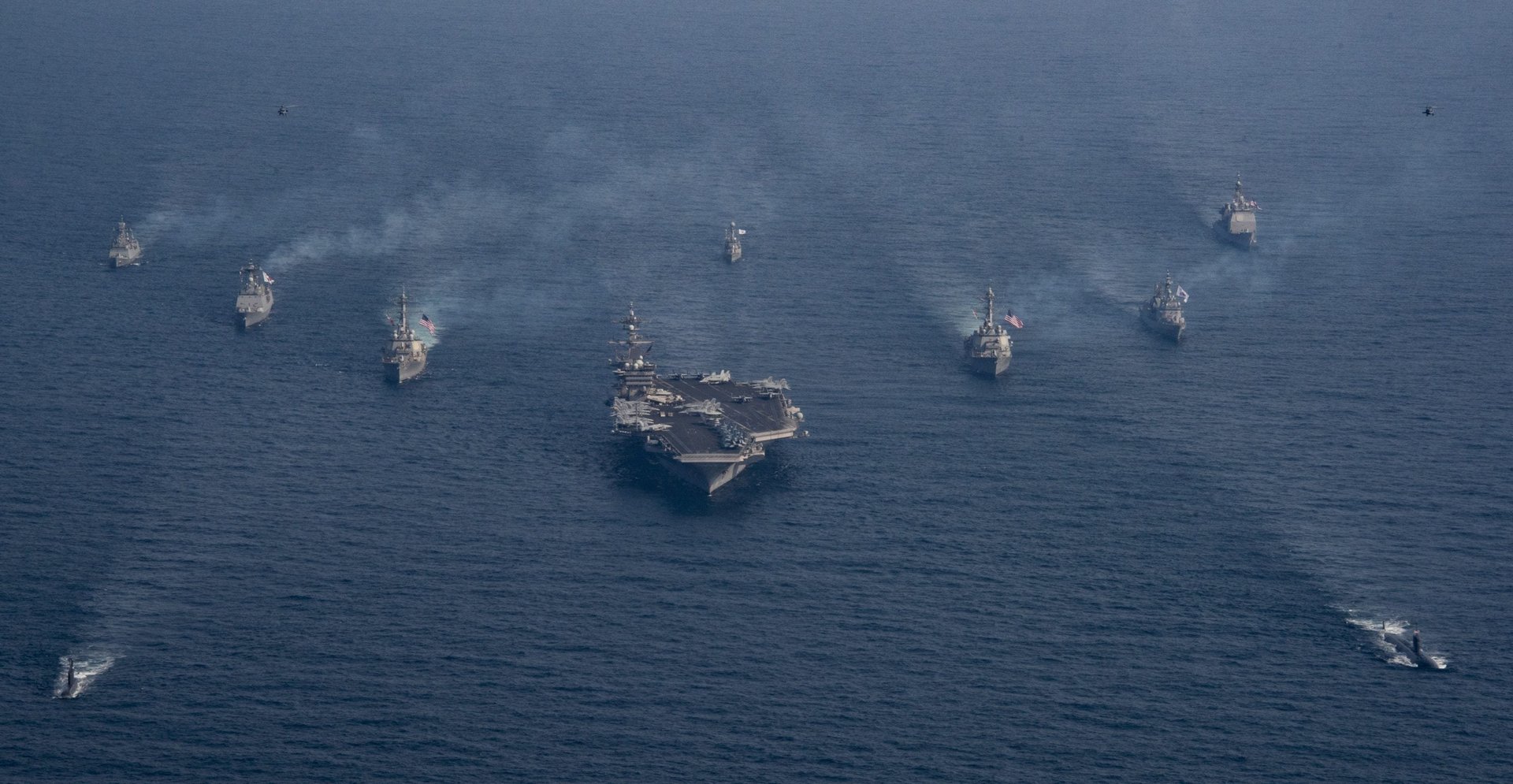

Whether he intends to or not, US president Donald Trump is making a lot of people nervous about the prospects of an American attack on North Korea. Earlier this year, he said that ”a major, major conflict” is a possibility, and he summoned the entire Senate to the White House for a briefing on the rogue nation’s weapons programs, which aim to develop nuclear-tipped missiles capable of hitting US cities. (Read latest, July 4: North Korea just test-launched a missile capable of hitting Alaska)
Even though Trump has a nuclear submarine and an aircraft carrier, the USS Vinson, positioned near the Korean peninsula, experts still put long odds on the US flat-out attacking just based on North Korea’s behavior to date. “I don’t know a single serious Korea analyst, hawk or dove, who thinks it’s a good idea,” says Robert Kelly, an associate professor of international relations at Pusan National University in South Korea. “I would say the likelihood is less than 10%.”
But there are other ways the US could get drawn into a military conflict in the region.
Scenario 1: North Korea attacks South Korea
Perhaps the most likely route to war in the region is via a skirmish between the North and South that quickly escalates into something larger.
Under its mutual defense treaty with South Korea, signed in October 1953, the US would be obliged to come to the South’s aid were it attacked. According to a US State Department summary of the pact, “each party recognizes that an armed attack in the Pacific area on either of the Parties would be dangerous to its own peace and safety,” and each “would act to meet the common danger in accordance with its constitutional processes.”
Kelly sees a risk of a conflict unfolding in “some kind of spiral, where small things lead to big things: There’s some kind of North Korean provocation and things spin out of control.”
He notes this nearly happened seven years ago in the Yellow Sea, which lies to the west of the Korean peninsula, near a disputed maritime border established in the 1950s after the Korean War. Responding to South Korean military drills in the area, North Korean forces shelled the island of Yeonpyeong in November 2010, killing several South Korean civilians and soldiers and damaging homes and military buildings.
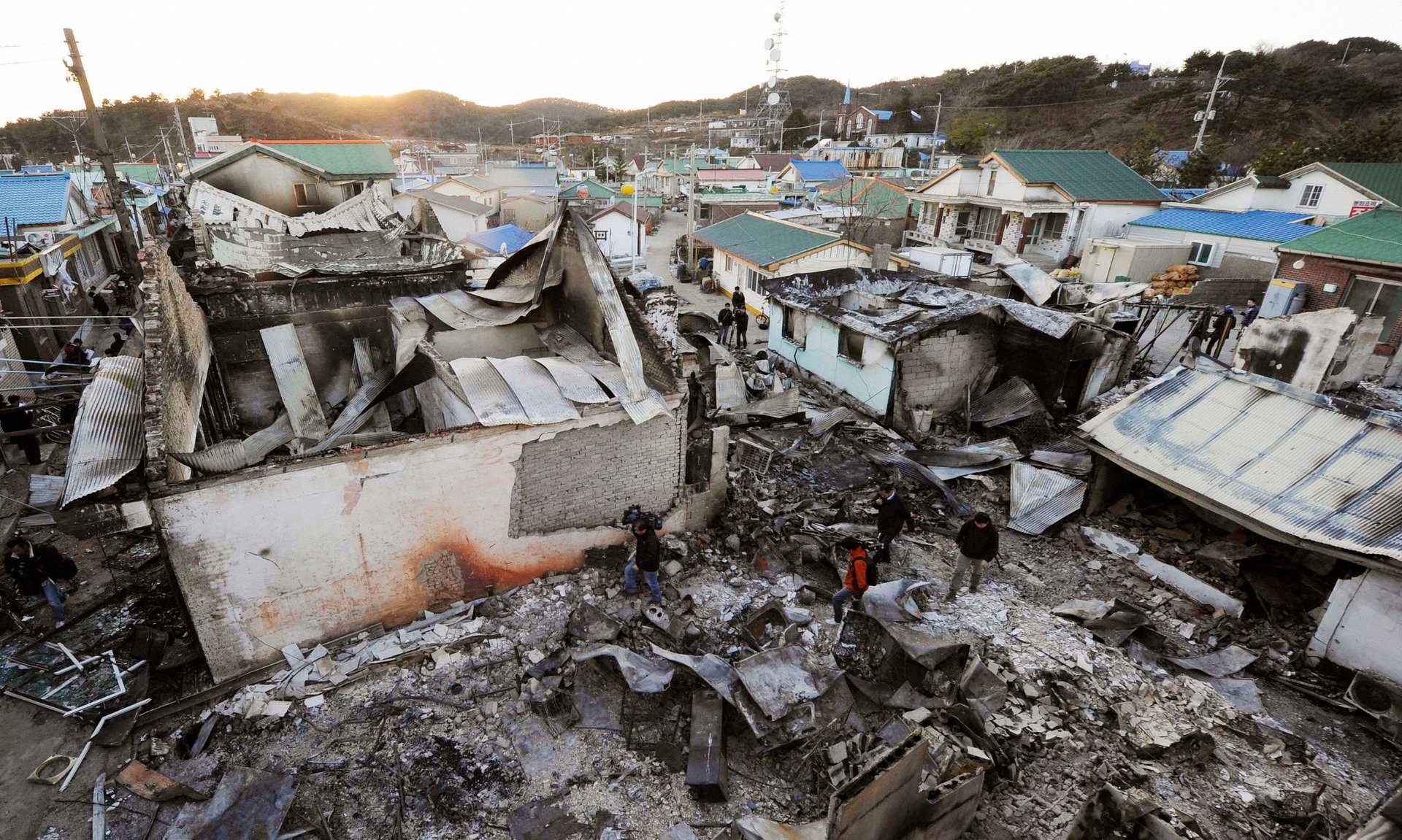
The attack added to an already tense environment. Earlier that year nearly 50 South Korean seamen died when their ship exploded and sank in the area. Evidence uncovered in the following months pointed overwhelmingly to a torpedo attack by a small North Korean submarine. Pyongyang denied responsibility.
“There was a lot of sympathy then to hit North Korea,” Kelly notes. “The president of the South Korea was like, ‘Okay, this is it.’ The USFK [United States Forces Korea] commander had to talk him down.”
The environment today is arguably tenser than in 2010. This time around, cooler heads might not prevail.
Scenario 2: North Korea hits Japan
Pyongyang has been conducting an increasing number of missile tests in recent years, showing off its growing versatility even as many tests fail. Some of the projectiles have come alarmingly close to hitting Japan. On March 6, North Korea launched four missiles eastward. A few came as close as 300km (190 miles) to Japan’s northwest coast.
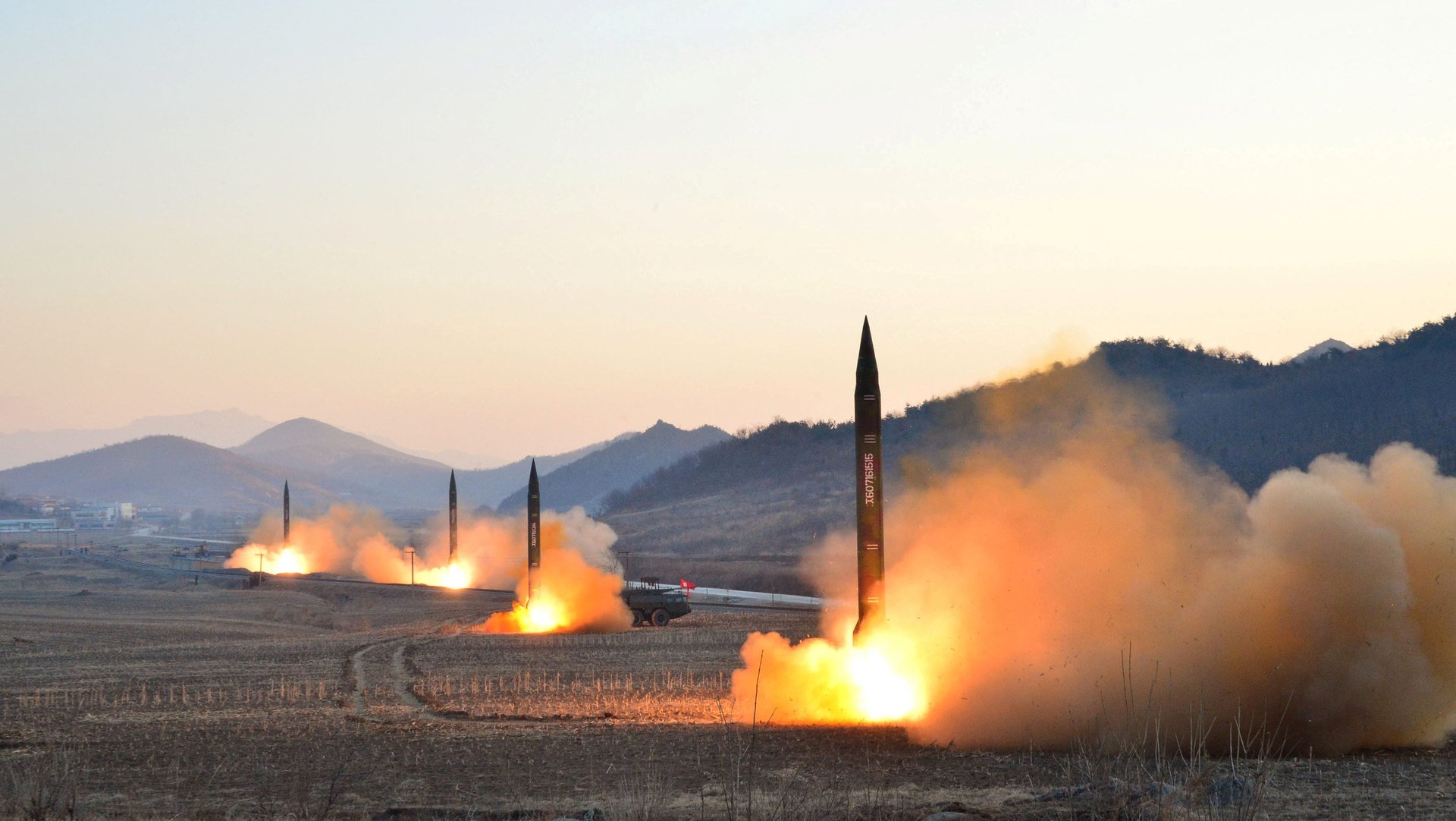
“The possibility of a mishap can’t be discounted,” says Sean Liedman, a military analyst and former US Navy officer. “What if a DPRK [North Korean] medium-range ballistic missile test launch ‘went long’ and struck Japanese territory? Even without a warhead, it would be difficult to put that cork back in the bottle.”
Kelly notes that North Korean missiles have poor guidance technology. If one or several hit Japanese soil, even by accident, Tokyo would “have to hit back,” he says.
And so might the US, under a mutual defense treaty it signed with Japan on Jan. 19, 1960. Similar to the pact with Korea, “each party recognizes that an armed attack against either Party in the territories under the administration of Japan would be dangerous to its own peace and safety and declares that it would act to meet the common danger in accordance with its constitutional provisions and processes,” as the State Department describes it.
Scenario 3: A friendly North Korean faction needs help
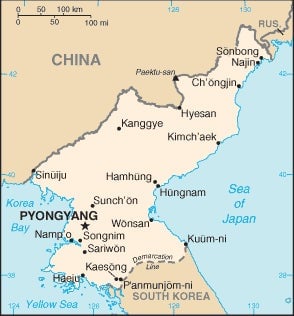
While the Kim family regime has managed to stay in power for three generations, there’s no guarantee it won’t be seriously challenged by forces from within North Korea.
“If hard currency and luxury goods were cut off, the regime could lose the support of the elite, which could lead to regime collapse,” notes David Maxwell, associate director of the Center for Security Studies at Georgetown University.
In January, a high-ranking defector said the regime was losing the support of the elites and that North Korean leader “Kim Jong-un’s days are numbered.”
In a power vacuum, factions could arise. Under one scenario, a North Korean faction, led by a renegade military commander, topples the Kim regime and secures Pyongyang, but then needs help from the outside to fight forces still loyal to the old regime.
“That commander could conceivably broadcast a plea for help saying, ‘Look, guys, I’ve done what you want. Help me,'” says Paul Stares, a senior fellow at the Council on Foreign Relations. “So that might put pressure on South Korea and the US to intervene to preserve the gains that have been made.”
A variation of that scenario involves a local commander gaining control of one area within North Korea while the Kim regime still rules the rest of the nation. He declares that he’s created a free area within the totalitarian state and needs international help to maintain it. “What do we do?” Stares asks. “Do we just let him be crushed, or do we go to his aid?”
If competing factions took hold, another important question would arise: What happens to North Korea’s nukes? (Not to mention its chemical and biological weapons.)
“They’d have to be secured,” says Euan Graham, a security analyst with the Lowy Institute for International Policy in Sydney. “The US and South Korea would probably feel they had no option but to participate in that.”
Scenario 4: North Korea aims its ICBMs right at US assets
For now, Seoul and Washington are focusing on economic sanctions and diplomatic pressure to push Pyongyang into dismantling its weapons programs. Under international law, it would, for now, be difficult to argue for anything more aggressive than that.
“When you get into what is known as preventive military strikes in which there is no imminent threat but we’re essentially striking a country to degrade their military capability, that is considered illegal,” says Stares.
But what if North Korea starts to signal, or intelligence gathering reveals, that it’s on the verge of launching nuclear-tipped intercontinental ballistic missiles (ICBMs) at the US mainland, or targets other US assets in the Pacific with shorter-range missiles? When that happens, a strike by the US could be considered a matter of self-defense.
“If a country feels that it is about to be attacked or is presented with a grave danger, it can claim this is an act of self-defense and therefore legitimate under international law. So preemption is permissible,” Stares notes. Ultimately, it’s the imminence of the threat that determines the legality of military action, he says.
And don’t forget the South China Sea
Before North Korea took over the headlines, there was another hotspot in Asia stressing out much of the world: the contested South China Sea. The sense of crisis there may have receded, but in fact the basic problem remains: Beijing insists that nearly the entire sea is Chinese territory, contrary to claims by other nations and the norms of international law.
China bases its claim on a “nine-dash line” it drew on a map about 70 years ago. Last July an international tribunal ruled, under the UN Convention on the Law of the Sea, that the claim had neither legal nor historical merit. Beijing ridiculed the proceedings, ignored the results, and has since continued to fortify its bases in the sea—some built atop reefs-turned-islands—with both military infrastructure and, to deflect accusations of militarization, awkwardly placed tourist and civilian outposts.
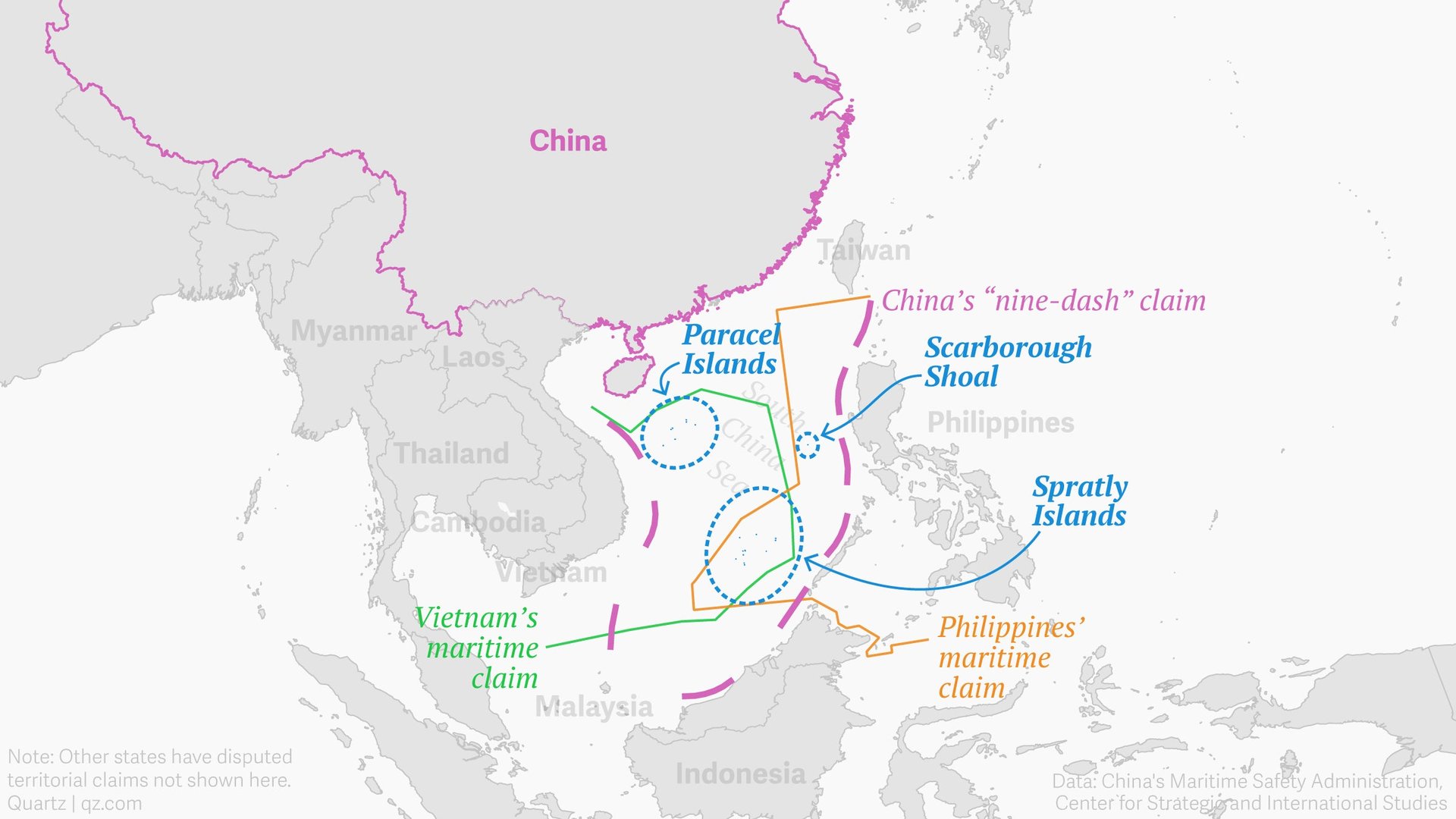
The US and other nations worry about the South China Sea becoming a “Chinese lake” controlled by Beijing—potentially a problem for some of the $5.3 trillion of global trade that passes through the sea each year, including $1.2 trillion of US commerce. Already China is trying to apply some of its own laws, such as a seasonal fishing moratorium, upon ships from other countries operating in waters that it claims but that are in fact international.
The US has on numerous occasions challenged China’s territorial overreach with “freedom of navigation” exercises. By passing close to Chinese outposts, they aim to remind Beijing that certain waters are not in fact under Chinese control.
The US also has made clear that building an island atop Scarborough Shoal, a reef formation near the Philippines, would be crossing a red line. That’s partly because it would be close to rotational troops the US has stationed nearby. But also, a base there would let Beijing establish a “strategic triangle,” helping it attain the kind of monitoring and control it longs for in the waterway. Should China begin dredging at Scarborough, the US could be drawn into a conflict.
As with the Korean peninsula, a military incident, even an accidental one, could quickly escalate into a larger confrontation between the US and China.